Being selected to represent a varsity sports team at IASAS involves a fairly straightforward process: A tryout period of a few days to make the initial team roster, tireless practices during the regular season, and individual strength training instantly come to mind.
But IASAS art or film? The pathway is less defined, even vague, to someone who isn’t fluent in the ways of making a film or an art piece. And that’s no one’s fault. Sports are a bit more linear than the complicated and sometimes messy process of trying to create a piece of art.
How to qualify for IASAS art and film is largely shrouded in mystery, unless you’ve actually been through it.
—-
For IASAS film, the first requirement involves attending all the film meetings with Danny Wall, the ISB’s IB Film teacher and film advisor. From these sessions, potential participants learn about the guidelines and expectations for delegate hopefuls. Additionally, the country that’s hosting on any given year creates an annual theme.
This year’s theme from Jakarta Intercultural School was “pada akhirnya,” an expression in Bahasa Indonesia that means “eventually” or “in the end.”
Students then must decide whether to work in a group or independently, each trying to create a film that executes their vision perfectly. For senior Madalie Savage, the choice to get involved was obvious. “I think what influenced me to actually join IASAS was, as a film class, we talked about all doing it together and I just thought it would be a cool opportunity to be more creative,” she says.
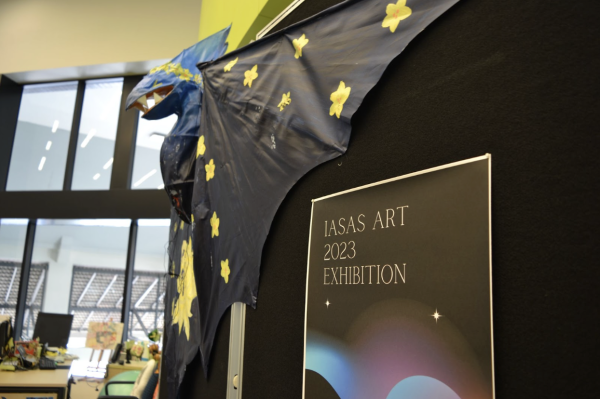
As for IASAS art, the process works a bit differently.
An interest form is sent out every year for submitting art to be a part of the IASAS Art Exhibition. A total of 25 works from ISB are selected, and each artist submits one to three pieces along with their personal statements. “These statements help explain the concept of your artwork and help vouch for its place in the exhibition,” says senior Ariel S Van Oosten Slingeland, who was a traveling delegate for IASAS art last semester.
What follows is an interview process with teachers and IASAS art advisors Andrew Snook and Basil Tahan for those interested in traveling. They then choose eight delegates to travel and represent ISB. As a previous delegate, Slingeland was interested in being a traveling delegate during her last year at ISB. “I was inspired to join IASAS Art this year because I really enjoyed the opportunity to meet and collaborate with other artists.”
Additionally, chosen delegates can sometimes help Mr. Snook and Mr. Tahan curate pieces to be included in the exhibition. “ISB looks for conceptually strong artworks, as in, there’s good meaning behind them,” Slingeland. “Without a strong concept, it feels like there are lots of things that are left unsaid.”
—-
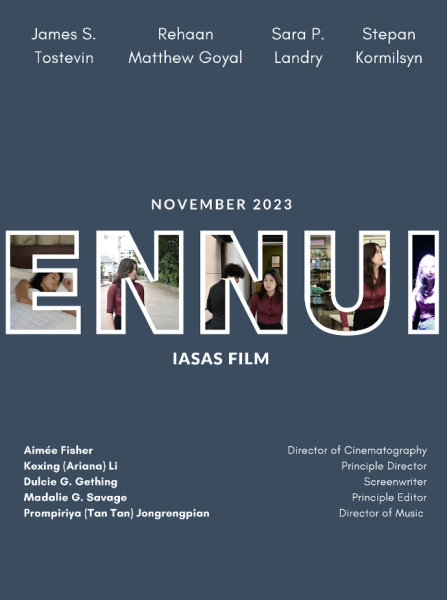
When it comes to film, potential delegates work to create a rough draft of their film, each representing an interpretation of the expression “pada akhirnya.”
Savage describes the film she worked on, Ennui, as more “experimental” and inspired by movies like Groundhog Day. “We wanted to focus on life becoming really tedious … and kind of repeating itself,” she explains. “You can definitely tell we’re IB students.”
The rough draft is then submitted and judged. According to IASAS film advisor, Danny Wall, films are chosen based on a rubric as well as the film’s “adherence to a theme.” He also looks at a piece objectively, seeing if a film meeting the deadlines.
Once all the films have been considered, delegates are chosen to travel and present their finalized work.
Savage says some of the most challenging work came during the editing process. “I didn’t go to every filming day, and sometimes in post-production, I would wish, ‘Oh, I wish we got this angle, or I wish we had a shot of this,’” she says. In the end, “I think you just kind of have to take creative freedom and do your own thing.”
Despite these troubles, the film ultimately allowed her to indulge in her interest and enjoy coming together at IASAS with other fledgling filmmakers. “It was really fun to have a new routine for a week, and I loved … meeting new people, [and] making a film with new people because in our class we kind of all just recirculate the same ideas these days.”
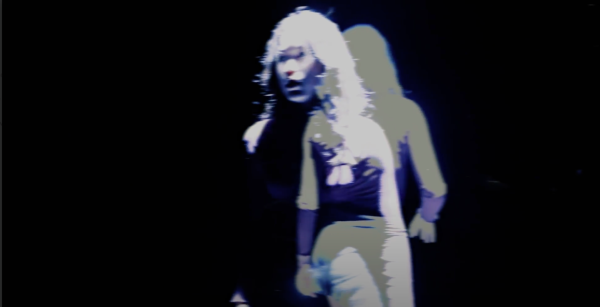
For IASAS art, Slingeland submitted work focused on “themes of object permanence and space and how they tie to comfort.” She stuck to her vision despite how “unpredictable” the artistic process can be. “Art is a wonderful outlet for emotions, ideas, and energy,” she says. “I think that it’s something that shouldn’t restrict people, so I try not to spend too much time precisely mapping out what I will do.”
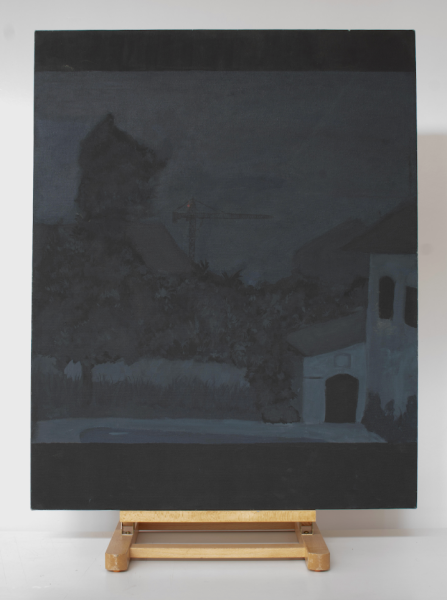
The most challenging part, meanwhile, was the collaboration piece created with the other traveling delegates. “I don’t usually map every precise detail that I want to do, but the end result was unpredictable as the work was being passed to seven other people. It was hard to imagine the end result, as we all had different ideas for the artwork,” she recalls.
But getting to know each other is a part of the fun of being in a team. Slingeland notes how being in the paint room with the other delegates was a “great team-building exercise,” which “helped with the IASAS experience and made it a lot easier to travel with everyone.”
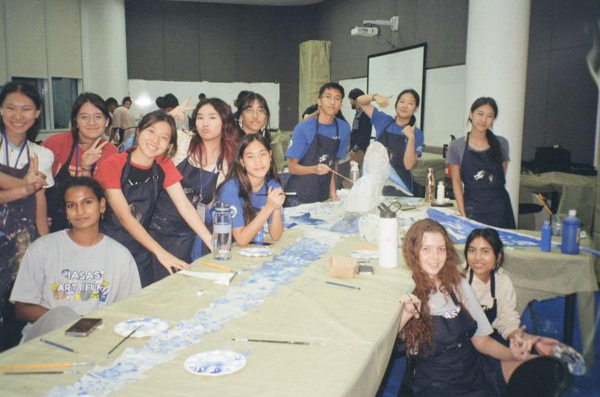
As with any event only experienced by a lucky few, there are bound to be misconceptions and a lack of understanding from those on the outside. Unlike sports or forensics and debate, IASAS for art and film is not competitive. These events are instead showcases meant to celebrate both the art and artists for their work. They also serve as an opportunity for students to meet artists from other IASAS schools so that they can collaborate on new art pieces.
“IASAS art isn’t competitive, and I feel like if anyone argues that there should be some sort of competition in the program, they don’t get the point of IASAS Art,” Slingeland explains.
There are similar assumptions with film. “A misconception about IASAS Film is that it’s less important than IASAS sports because our school very much circulates around sports, and so people think that it’s just a cop-out,” Savage says. “I think it’s just as cool to do IASAS Film, and it’s just as enjoyable because it’s a matter of liking and enjoying different things.”
Art, no matter how minuscule, complicated, or simple, has the potential to connect to people through raw emotion and imagery. It is the expression of ideas. And, ultimately, the goal of IASAS Art and Film is to make our world that much more digestible by celebrating artwork that shows that.

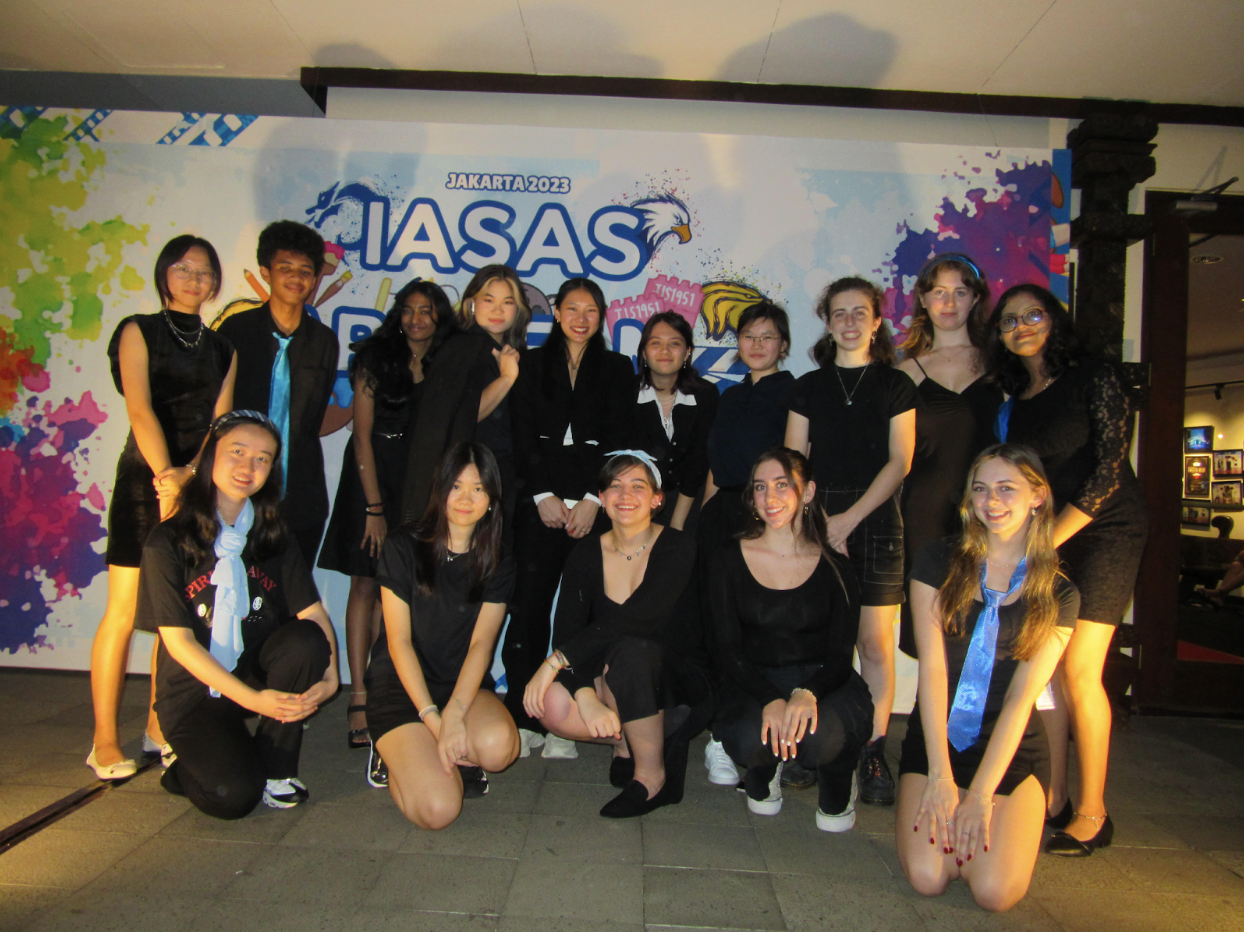


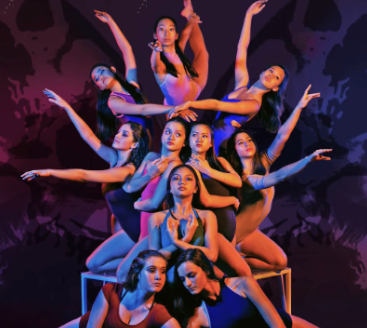
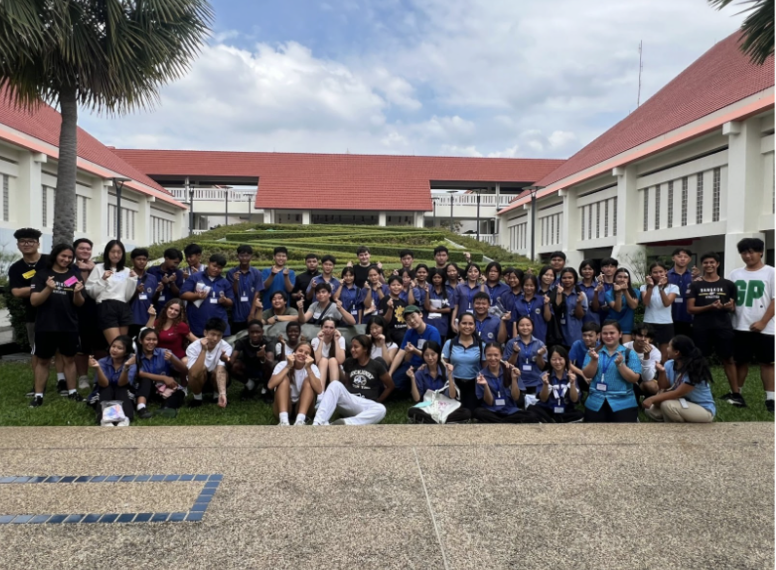

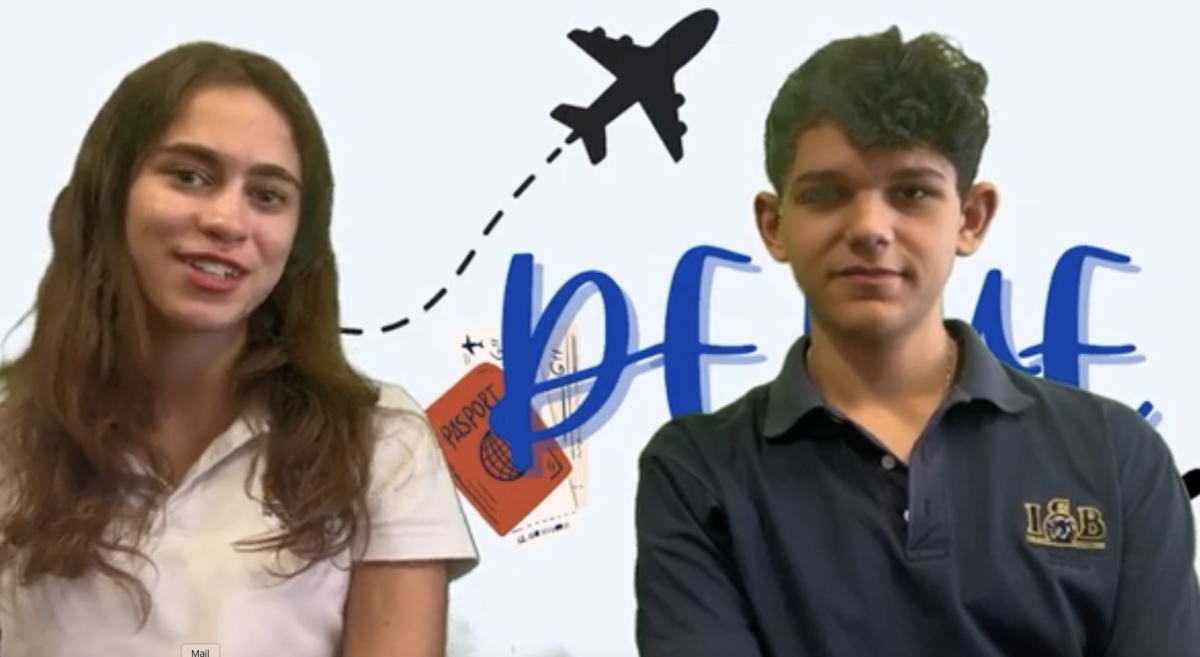

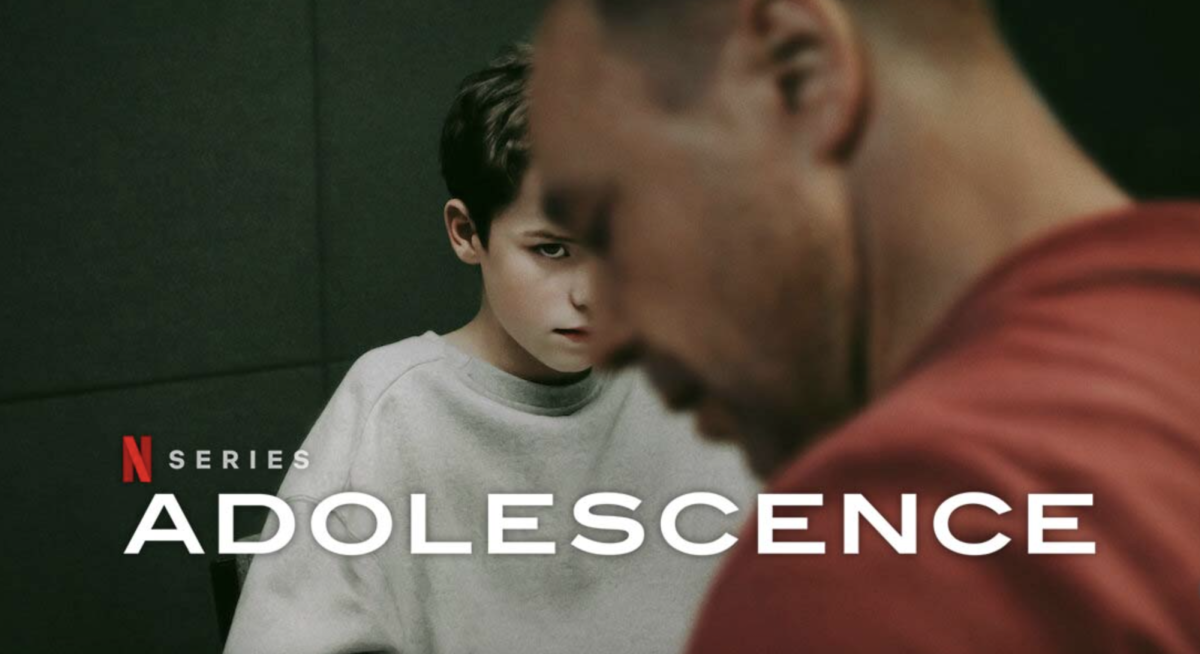


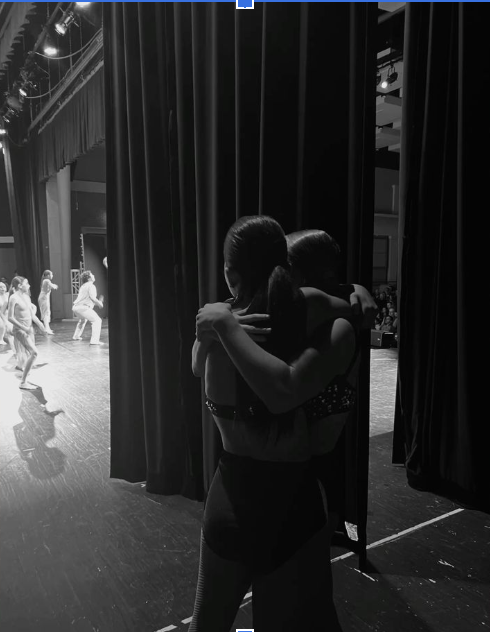
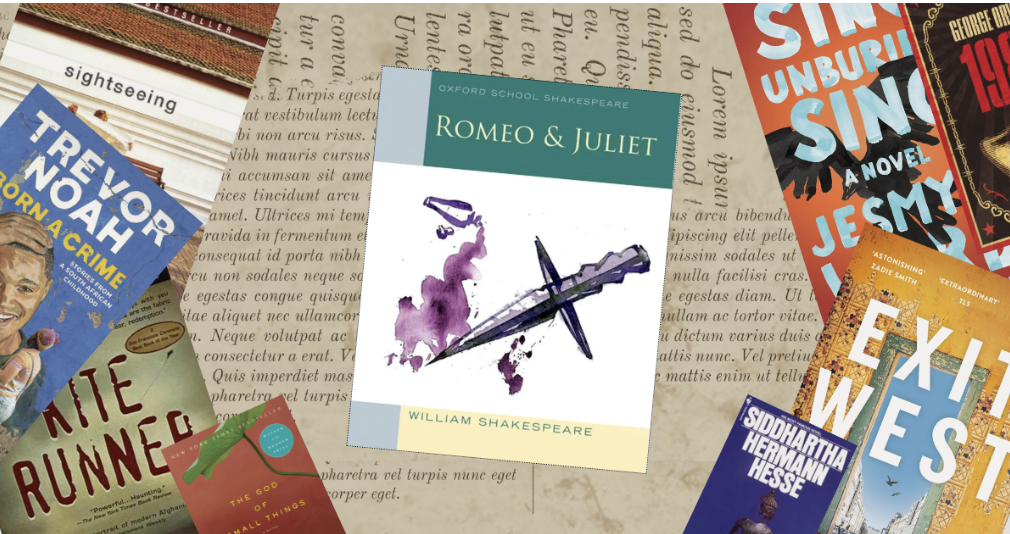




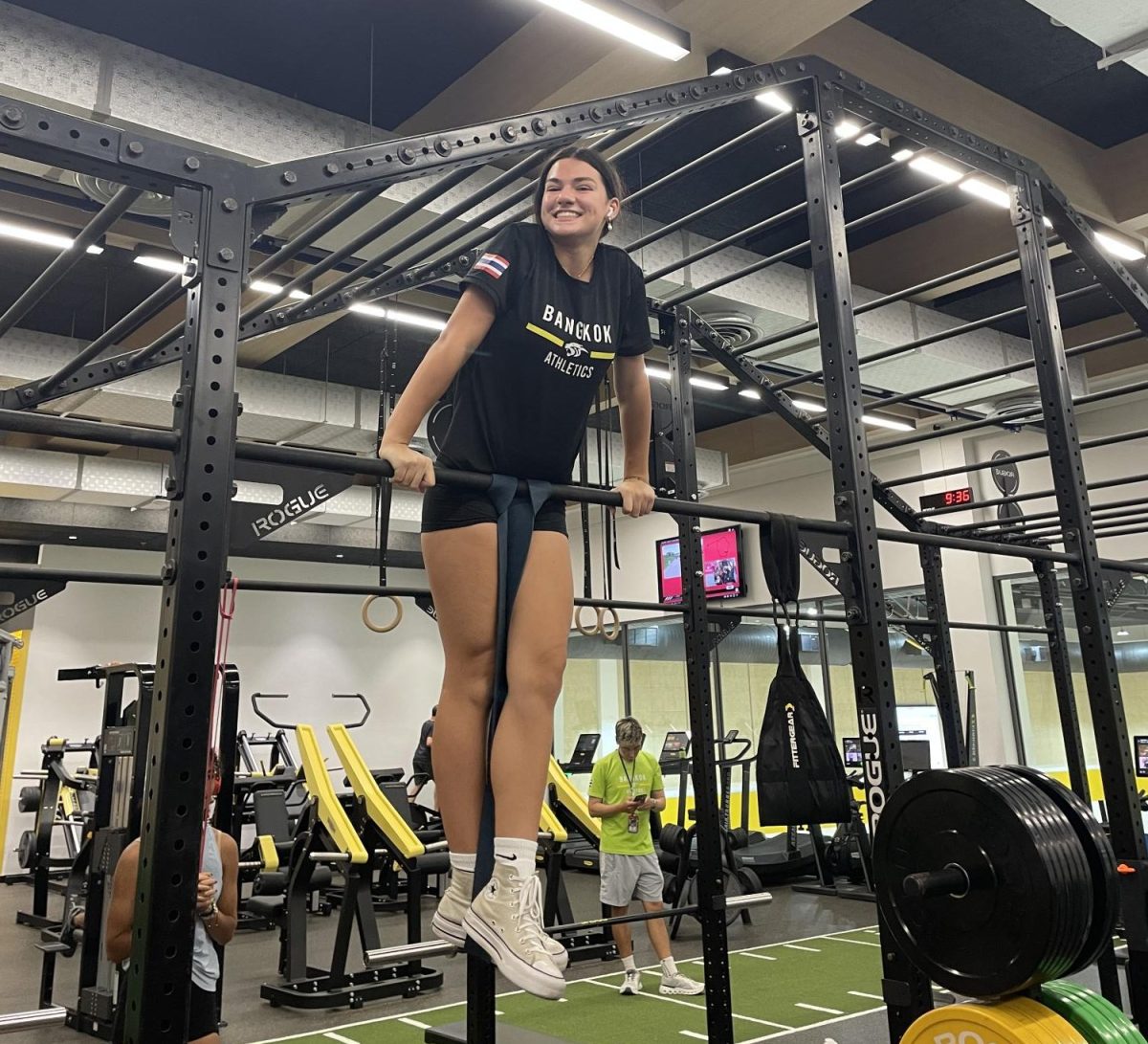
gigi • Feb 9, 2024 at 2:15 pm
this is such a good article! me personally I’m not a fan of reading but I really enjoyed reading your article because it was so entertaining!
Mindy • Feb 9, 2024 at 12:08 pm
you’re right!
Samantha Lamis • Feb 9, 2024 at 1:15 pm
thanks!!!